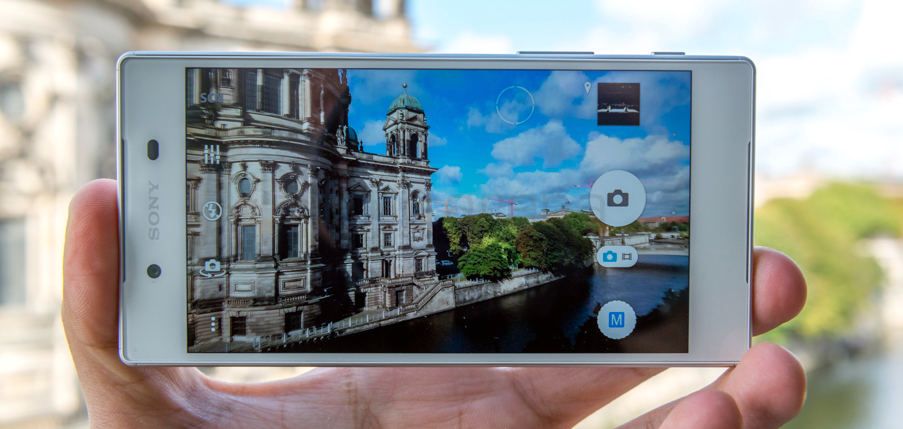
A photograph is as good as the subject in it. An out of focus photo is as good as a nonexistent one and this is a problem that still afflicts smartphone cameras. Anything apart from perfect lighting conditions or equally still subject apart, a majority of smartphones just can’t focus fast enough to capture the subject. So, color us surprised when we learnt that the Sony Xperia Z5 adopted Sony’s blazing Hybrid Autofocus system from it’s DSLR lineup and implemented it in a smartphone. With potentially class leading focus speeds, what better way than to see how much better the Z5 is against the competition than to pitch them head to head?

With all this talk about faster focus and the entire Hybrid Autofocus concept, it is fair that you might not really understand what’s going on. Let us try and make things simpler for you. Traditionally cameras and by extension phones have used a contrast detection autofocus system. This is achieved by measuring contrast within a sensor. As the light intensity varies between different areas of the image, the camera tries to get a focus lock and increases the maximum contrast. This type of focus detection is relatively slow and is in not very good at tracking motion. Considering that the autofocus assembly doesn’t measure distance at all, moving objects invariably go out of focus.

Phase detection on the other hand is a fairly complicated means of getting a focus lock. At it’s core, phase detection autofocus breaks up an image in two parts and compares the images. Phase detection autofocus sensors compare two offset images of the subject, if they line up next to each other it means that the subject is in focus. The system provides a lot more information and the camera can gauge how much it needs to refocus by.

But what if you combine the two? Hybrid autofocus combines the benefits of both to deliver some of the fastest focusing speeds possible. With Phase Detection Autofocus, the camera can get a super fast focus lock and then uses the more accurate Contrast Detection Autofocus to further refine it and get a sharper lock. What about laser autofocus then? Well, laser autofocus is a relatively new method that has been adopted by several smartphones starting with the LG G3. What the laser AF does is basically send out bursts of laser from the smartphone and onto the object that it wishes to focus on. The laser then reflects off the object and returns to the sensor. Based on the actual time taken for the laser to reach back onto the sensor, the phone will be able to calculate the distance and using an algorithm, focus on the object correctly. While Laser AF is certainly fast on some phones, it still is quite early to be called as a fool-proof method and in many smartphones,the implementations aren’t executed well as they tend to hunt a lot for focusing.In fact, there are many phones in the market that focus on objects quicker than their laser AF equipped competitors.

For our tests, we decided to put the Sony Xperia Z5 against the Samsung Galaxy Note5 and the Apple iPhone 6S. In our first test, we decided to take things a bit easy. Using a fixed object we captured the same photograph in multiple ways. The first experiment involved manually selecting the object and timing this to see which phone gets a focus lock the fastest. We also timed how fast the camera could perform when doing this operation twice in quick succession as this is a scenario we often find ourselves in. But what about low light conditions? This is where the focusing speeds really break down, so we repeated this test in worse lighting.
httpv://www.youtube.com/watch?v=e8KVT241j30&feature=youtu.be
Our final stationary object test was a direct shot in which we let the camera software handle everything end to end. We pressed the onscreen camera shutter and then let the phone focus, capture in one shot. While a bit impartial to the Z5, we repeated this test using the hardware capture key. Needless to say, the Sony Xperia Z5 aced all our tests.
A fixed object however is an easy target. A lot of smartphone shooting happens while on the move, either the subject or you yourself. Our first test involved focusing on a moving car and gauging the focus bracket tracking on the car. This test focused (no pun intended) not just on the initial focus lock but also on tracking and making sure that the focus doesn’t jump between similar colored cars.

Our final test was where the camera itself moves. Here we shot a road sequence and then moved up to a close object to see how quickly the camera can shift the focus. The Sony Xperia Z5 uses both phase detection and contrast detection autofocus and takes it a step further using software/hardware optimizations with the company claiming that it can get a focus lock in 0.03 seconds. Add to this a cutting edge 23MP sensor, improved optics and you’ve got a phone that is poised to have one of the best cameras around. At least in terms of focus speeds, there is no doubt that the Sony Xperia Z5 is the fastest camera around. Stay tuned for our video comparison test between the three smartphones.

